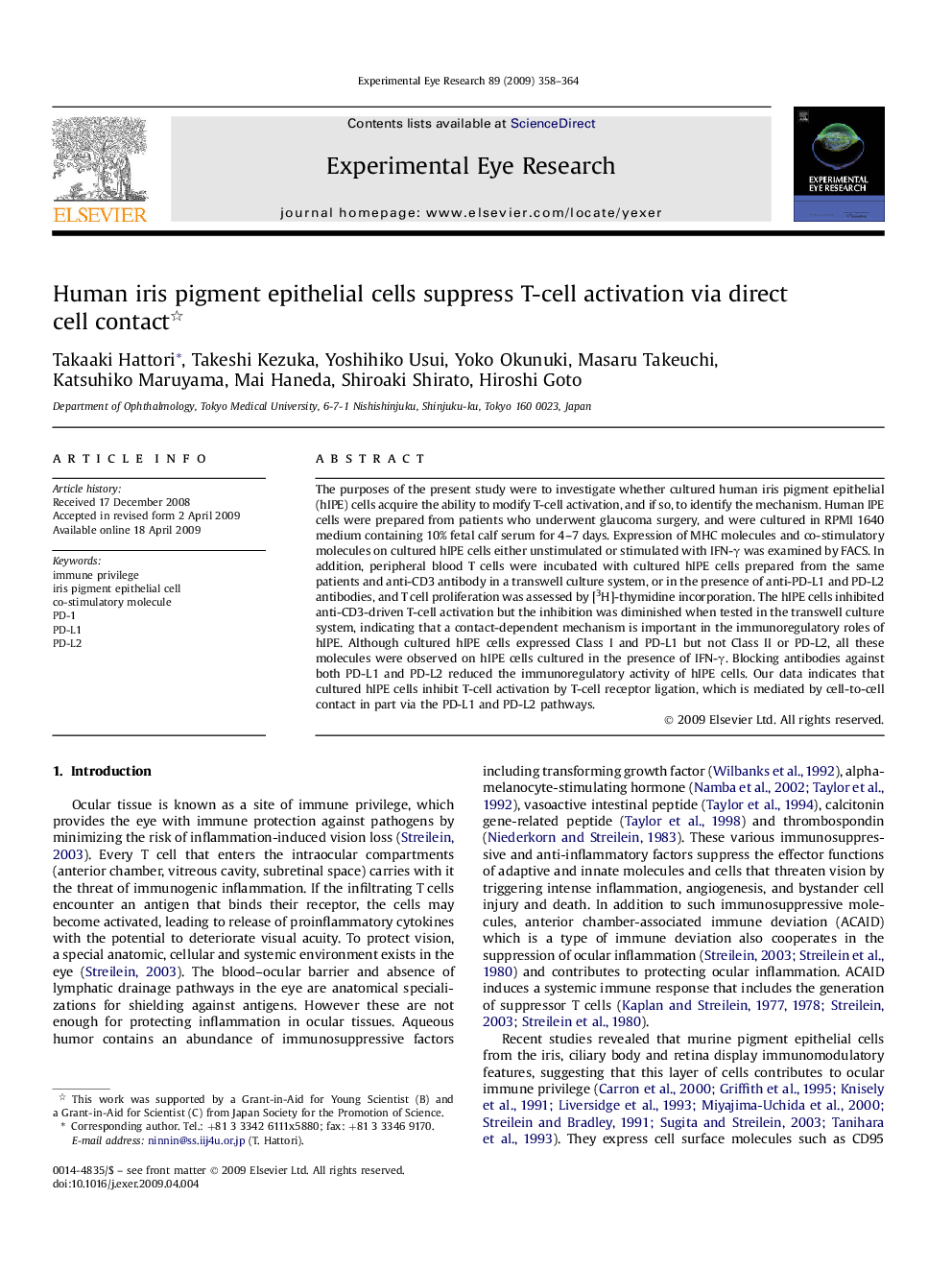| Article ID | Journal | Published Year | Pages | File Type |
|---|---|---|---|---|
| 4012373 | Experimental Eye Research | 2009 | 7 Pages |
The purposes of the present study were to investigate whether cultured human iris pigment epithelial (hIPE) cells acquire the ability to modify T-cell activation, and if so, to identify the mechanism. Human IPE cells were prepared from patients who underwent glaucoma surgery, and were cultured in RPMI 1640 medium containing 10% fetal calf serum for 4–7 days. Expression of MHC molecules and co-stimulatory molecules on cultured hIPE cells either unstimulated or stimulated with IFN-γ was examined by FACS. In addition, peripheral blood T cells were incubated with cultured hIPE cells prepared from the same patients and anti-CD3 antibody in a transwell culture system, or in the presence of anti-PD-L1 and PD-L2 antibodies, and T cell proliferation was assessed by [3H]-thymidine incorporation. The hIPE cells inhibited anti-CD3-driven T-cell activation but the inhibition was diminished when tested in the transwell culture system, indicating that a contact-dependent mechanism is important in the immunoregulatory roles of hIPE. Although cultured hIPE cells expressed Class I and PD-L1 but not Class II or PD-L2, all these molecules were observed on hIPE cells cultured in the presence of IFN-γ. Blocking antibodies against both PD-L1 and PD-L2 reduced the immunoregulatory activity of hIPE cells. Our data indicates that cultured hIPE cells inhibit T-cell activation by T-cell receptor ligation, which is mediated by cell-to-cell contact in part via the PD-L1 and PD-L2 pathways.
